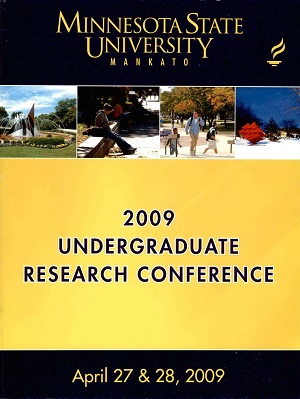Political Art of the Black Panther Party: Cultural Contrasts in the Nineteen Sixties Countermovement
Location
CSU 202
Start Date
27-4-2009 8:00 AM
End Date
27-4-2009 10:00 AM
Student's Major
Art
Student's College
Arts and Humanities
Mentor's Name
Alisa Eimen
Mentor's Department
Art
Mentor's College
Arts and Humanities
Description
The Black Power Movement found its beginning in the late fifties with sit-ins and freedom rides, which conveyed a new racial consciousness within the black community in the United States. However, these initial forms of protest were non-violent. The civil rights movement did not see a great deal of violence until nineteen sixty five when Huey P. Newton and Bobby Seale founded the Black Panther Party. Through the pages of the Party's weekly newspaper the Black Panther, resident artist Emory Douglas used his drawings to persuade action and vengeance. His work was similar in style to the work of Pop artists Roy Lichtenstein and Andy Warhol. While these artists thrived in the culture of the nineteen sixties, Douglas was widely unpopular, or rather unrecognized, despite what I will argue is an obvious resemblance. In contrast to Douglas' work, critics wanted to see non-resistant ideas portrayed in art. These could be foimd in the work of Warhol and Lichtenstein. But even when Warhol's work began to convey images of race and violence there was no change in his popularity. This begs a comparison between the popularity of Douglas and Warhol, as they both depicted scenes of violence. Upon comparison, the conclusion that Douglas' art was unacceptable for discriminatory reasons, lack of an influential audience, and also for its subject matter, which transformed the weak protestor into an armed and powerfiil force, can be reached. Women's role in the Party will also be discussed in comparison to the typical image of the female in the nineteen sixties culture.
Political Art of the Black Panther Party: Cultural Contrasts in the Nineteen Sixties Countermovement
CSU 202
The Black Power Movement found its beginning in the late fifties with sit-ins and freedom rides, which conveyed a new racial consciousness within the black community in the United States. However, these initial forms of protest were non-violent. The civil rights movement did not see a great deal of violence until nineteen sixty five when Huey P. Newton and Bobby Seale founded the Black Panther Party. Through the pages of the Party's weekly newspaper the Black Panther, resident artist Emory Douglas used his drawings to persuade action and vengeance. His work was similar in style to the work of Pop artists Roy Lichtenstein and Andy Warhol. While these artists thrived in the culture of the nineteen sixties, Douglas was widely unpopular, or rather unrecognized, despite what I will argue is an obvious resemblance. In contrast to Douglas' work, critics wanted to see non-resistant ideas portrayed in art. These could be foimd in the work of Warhol and Lichtenstein. But even when Warhol's work began to convey images of race and violence there was no change in his popularity. This begs a comparison between the popularity of Douglas and Warhol, as they both depicted scenes of violence. Upon comparison, the conclusion that Douglas' art was unacceptable for discriminatory reasons, lack of an influential audience, and also for its subject matter, which transformed the weak protestor into an armed and powerfiil force, can be reached. Women's role in the Party will also be discussed in comparison to the typical image of the female in the nineteen sixties culture.
Recommended Citation
Seifert, Melissa. "Political Art of the Black Panther Party: Cultural Contrasts in the Nineteen Sixties Countermovement." Undergraduate Research Symposium, Mankato, MN, April 27, 2009.
https://cornerstone.lib.mnsu.edu/urs/2009/oral-session-01/5




